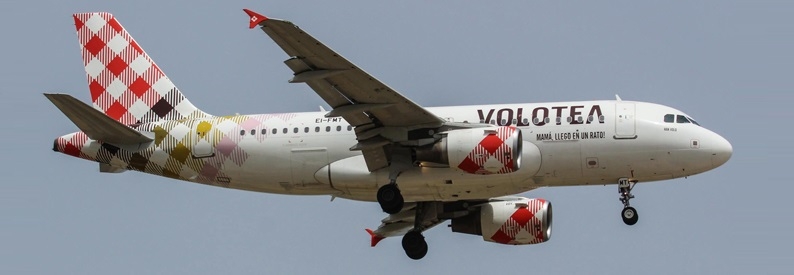Volotea Eyes A220/E2 for A319 Replacement, Seeks A320s

Spain’s Volotea is evaluating Embraer E2 and Airbus A220 jets to replace its aging Airbus A319‑100 fleet while simultaneously issuing an RFP for additional A320‑200 aircraft to fuel its expansion plans. Founder and CEO Carlos Muñoz revealed the airline’s fleet strategy at Routes Europe 2025 in Seville, outlining how Volotea intends to modernize its narrowbody lineup and support the opening of 10 to 12 new bases over the next few years.
Currently operating seventeen A319‑100s with an average age of 20.4 years, Volotea is investigating the Embraer E195‑E2 and Airbus A220‑300 as potential successor types. Both aircraft offer significant improvements in fuel efficiency, reduced environmental impact, and lower maintenance costs compared to the airline’s existing A319s. “We keep looking for more midlife aircraft because we see lots of opportunities,” Muñoz told ch‑aviation. “We shared an idea of our fleet for the next couple of years, which includes two to three [new additions] on the low end and 10 at the upper range.”
While evaluating E2 and A220 options, Volotea has issued a request for proposals to dry‑lease between two and six Airbus A320‑200s powered by CFM International Leap‑1A engines. The airline is targeting delivery of these A320‑200s in the first quarter of 2026, though it will consider earlier fourth‑quarter 2025 slots to accelerate growth. With a current fleet of 24 A320‑200s in addition to its A319s, the airline seeks to bolster capacity on existing routes and launch new domestic and short‑haul international services from its Spanish bases.
Volotea’s pivot toward A220‑300 and E195‑E2 aircraft aligns with broader industry trends among low‑cost carriers seeking more efficient narrowbodies. The A220‑300’s advanced Pratt & Whitney GTF engines and cabin comfort enhancements make it a strong candidate for replacing older A319s, while the E195‑E2 offers similar performance benefits along Embraer’s footprint in Europe. Both types would deliver lower trip costs and reduced noise footprints, supporting Volotea’s sustainability goals and regulatory compliance across Europe.
The RFP for additional A320‑200s supports Volotea’s ambition to open as many as 12 new bases over the coming seasons. By dry‑leasing these jets, the airline retains operational control while avoiding the upfront capital expenditures of new purchases. The selected lessors will need to provide aircraft no older than 15 years to ensure fleet commonality and reliability. Proposals featuring multiple sistership aircraft are encouraged to streamline pilot training and maintenance processes.
Volotea’s aggressive growth plan builds on its success connecting secondary airports across Spain, Italy, France, and Greece. With low operating costs, a single all‑economy cabin configuration, and point‑to‑point business model, the airline has captured market share on underserved routes. Its fleet expansion strategy will allow it to increase frequencies on popular city pairs and explore new markets in Western Europe and North Africa.
As the airline weighs offers from Airbus, Embraer, and major lessors, its final decision will shape Volotea’s ability to maintain competitive unit revenues and deliver reliable service. By combining the proven A320‑200 with potential future additions of A220 or E2 jets, Volotea aims to balance immediate growth needs with long‑term efficiency gains. The coming months will reveal whether the Spanish low‑cost carrier opts for the A220’s cutting‑edge technology, the E2’s operational flexibility, or a hybrid fleet that leverages the strengths of both types. Whatever the outcome, Volotea’s commitment to a modern, efficient, and scalable fleet underscores its ambitions in Europe’s competitive aviation market.
Related News: https://suspicious-zhukovsky.67-21-117-18.plesk.page/category/air-travel-business/airline-finance/
Sources: AirGuide Business airguide.info, bing.com, ch-aviation.com
